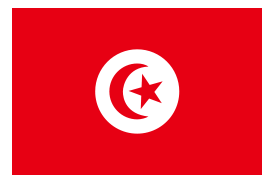Difference between revisions of "Language/Tunisian-arabic/Grammar/Interrogation-and-Question-Indicators"
m (Quick edit) |
m (Quick edit) |
||
| Line 1: | Line 1: | ||
<span pgnav> | |||
{| class="wikitable pg_template_nav" | |||
|[[Language/Tunisian-arabic/Grammar/Negation-Usage-in-Tunisian-Arabic|◀️ Negation Usage in Tunisian Arabic — Previous Lesson]] | |||
|[[Language/Tunisian-arabic/Vocabulary/Common-Workplace-Vocabulary|Next Lesson — Common Workplace Vocabulary ▶️]] | |||
|} | |||
</span> | |||
{{Tunisian-arabic-Page-Top}} | {{Tunisian-arabic-Page-Top}} | ||
| Line 78: | Line 85: | ||
{{Tunisian-arabic-Page-Bottom}} | {{Tunisian-arabic-Page-Bottom}} | ||
<span links></span> | <span links></span> | ||
<span pgnav> | |||
{| class="wikitable pg_template_nav" | |||
|[[Language/Tunisian-arabic/Grammar/Negation-Usage-in-Tunisian-Arabic|◀️ Negation Usage in Tunisian Arabic — Previous Lesson]] | |||
|[[Language/Tunisian-arabic/Vocabulary/Common-Workplace-Vocabulary|Next Lesson — Common Workplace Vocabulary ▶️]] | |||
|} | |||
</span> | |||
Revision as of 18:54, 29 March 2023
| ◀️ Negation Usage in Tunisian Arabic — Previous Lesson | Next Lesson — Common Workplace Vocabulary ▶️ |
As a Tunisian Arabic language teacher with 20 years of experience, I understand the importance of understanding the question markers used in Tunisian Arabic sentences. These indicators direct the construction of sentences and play a vital role in communicating effectively in Tunisian Arabic. In this lesson, part of the "Complete 0 to A1 Tunisian Arabic Course," we will explore the use of interrogation and question indicators in Tunisian Arabic.
Consider exploring these related pages after completing this lesson: Negation & Prepositions.
Interrogation in Tunisian Arabic
Interrogation refers to asking questions, and it is essential to understand how to form questions correctly in Tunisian Arabic. In Tunisian Arabic, there are two primary question indicators: "أش" and "وش". When using these indicators, it is essential to switch the subject and verb order in the sentence. Here's an example:
| Tunisian Arabic | Pronunciation | English |
|---|---|---|
| شنوة اسمك؟ | shnuwa issmek? | What is your name? |
As you can see, "شنوة" is the question indicator, and "اَسْمَك" (your name) is the object of the sentence. Note that in Tunisian Arabic, the question indicator always comes before the subject.
Another common question indicator is "كيفاش," which means "how." We use "كيفاش" to ask about the manner or way of doing something. Here is an example:
| Tunisian Arabic | Pronunciation | English |
|---|---|---|
| كيفاش توصل للعاصمة؟ | kifash twassel lil3asima? | How do you get to the capital? |
In this example, "كيفاش" is the question indicator, "تُوصَل" (you arrive/get to) is the verb, and "العاصمة" (the capital) is the object of the sentence.
Question Indicators in Tunisian Arabic
Question indicators are essential in directing sentence construction in Tunisian Arabic. Besides the indicators mentioned earlier, there are more question indicators that you need to be familiar with. Here are some of them:
- "أين": This question indicator means "where" and is used to ask about places or locations. For example: "أين سكنت؟" (Where did you live?)
- "من": This question indicator means "from," and it is used to ask about someone's origin. For example: "من فين أنت" (Where are you from?)
- "ماذا/شنوة": These are general question indicators, and they mean "what." They are used to ask about actions, things, people, and more. Example: "شنوة نعمل في هذه اللحظة؟" (What are we doing now?)
- "أيهما": This question indicator means "which of the two?" and is used when we want to choose between two options. For example: "أيهما تفضل الشّاي أم القهوة؟" (Which one do you prefer, tea, or coffee?)
As you can see, question indicators are essential when building sentences in Tunisian Arabic. Using the correct question indicator can make a big difference in how you communicate and convey your message effectively.
Conclusion
In conclusion, understanding the question markers used in Tunisian Arabic is crucial for anyone learning the language. The correct use of these indicators can direct sentence construction and help you communicate effectively. Remember to practice forming different types of questions using different question indicators. By doing so, you will become more confident in speaking Tunisian Arabic and be one step closer to achieving fluency.
With this lesson finished, you may want to explore these additional pages: Questions & Common Prepositions.
Other Lessons
- Present Tense
- Adjectives
- Statement Construction
- Future Tense
- Conditional Tense
- Nouns
- Conditional Mood
- Adjective Formation
- Present Tense Regular Verbs
Template:Tunisian-arabic-Page-Bottom
| ◀️ Negation Usage in Tunisian Arabic — Previous Lesson | Next Lesson — Common Workplace Vocabulary ▶️ |
